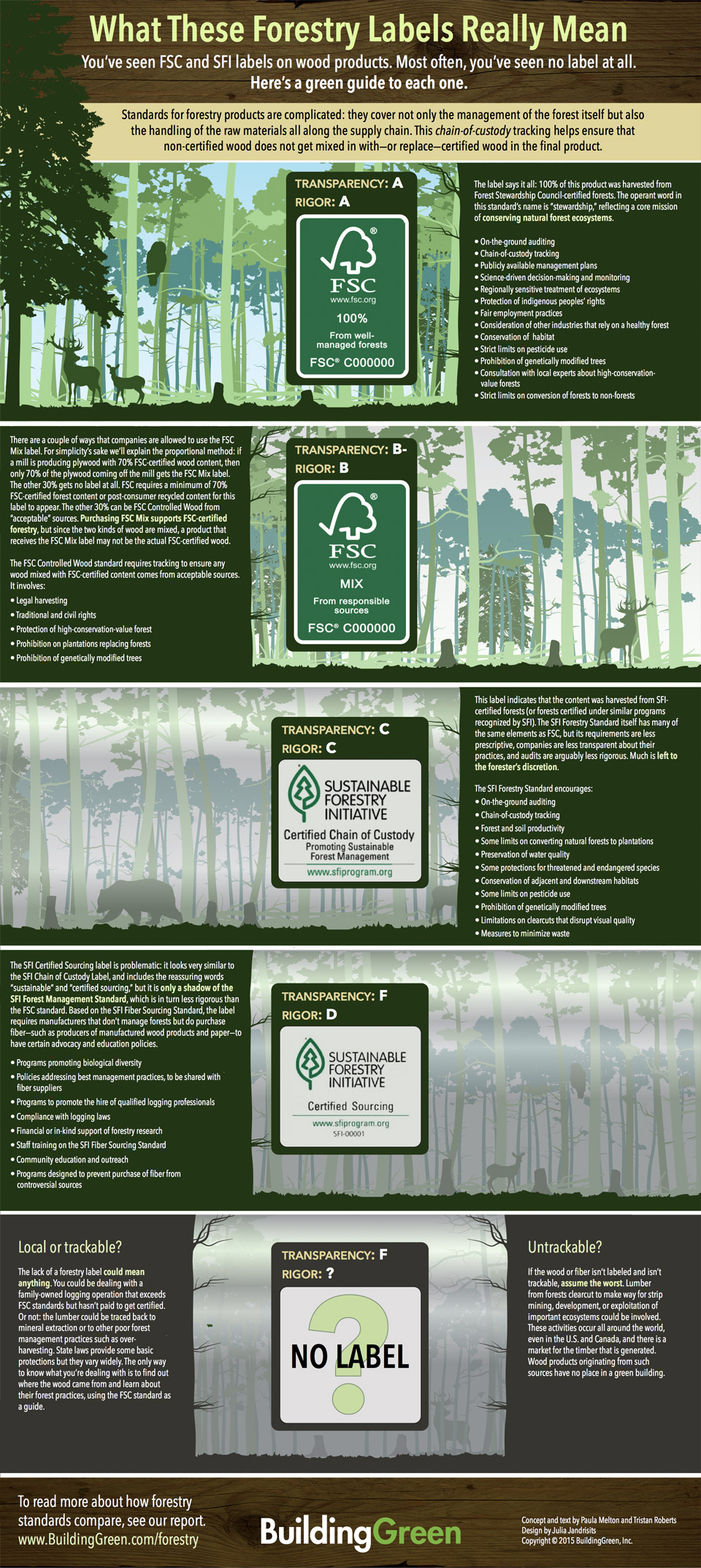When you see a wood product that is certified by the Forest Stewardship Council or the Sustainable Forestry Initiative, you’re probably wondering: What does FSC-certified really mean? What does SFI-certified mean? Are they the same? If not, which certification is better? These are all common questions surrounding the labeling of sustainable wood building materials, and rightly so since not all forestry labels are created equal. In fact, both aforementioned organizations have multiple green labels that can mean very different things. Before you decide on an eco-friendly wood product, make sure you know exactly what its label (or lack thereof) really means.
What Forestry Labels Really Mean
- 100% FSC-Certified is the highest standard available. Ideally, every green building project will use only 100% FSC-certified wood. Wood product manufacturers must go through an extremely rigorous process focused on total transparency to achieve the FSC’s 100% label, including on-the-ground auditing, chain-of-custody tracking, protection of indigenous peoples, strict conservation of habitats, and much more.
- FSC Mix is a label you’ll find on wood products that contain at least 70% FSC-certified wood. The other 30% of the product may very well be from “acceptable” sources, but it is not required to be in order for the product to receive the FSC Mix label. In addition, while purchasing products with any sort of FSC label promotes sustainable forestry, you’re not guaranteed to receive the FSC-certified wood in your product, since multiple kinds of wood are mixed. Best to go with 100% FSC-certified products whenever possible.
- The SFI Forestry Standard has many of the same elements of FSC, but its requirements are less prescriptive (more like guidelines). Under the SFI Standard, companies can be less transparent about their practices and audits are arguably less rigorous; the SFI Certification website lists that a “few” non-conformances are allowed during audits. In short, SFI-certified manufacturers are taking a step in the right direction, but a lot is still left up to the forester’s discretion.
- The SFI Certified Sourcing label is even more problematic — Certified Sourcing means that mixed-wood product manufacturers are required to “have certain advocacy and education policies.” But besides educating staff and making some effort to avoid controversial wood sources, all a company really must do to receive this label is not explicitly break logging laws.
- No Label – However questionable Forestry Labels can be, nothing is worse than a wood product with no such label and/or no indication of where the wood came from. Unlabeled wood products from unknown sources have no place in a green building. Strip mining, destruction of entire ecosystems, over-harvesting, and mineral extraction are all examples of poor forestry practices that any unlabeled wood products may very well support.

Courtesy of BuildingGreen.


![What Forestry Labels Really Mean [Infographic]](https://elemental.green/wp-content/uploads/2016/09/photo-1445346753792-6c667d917349-1280x640.jpeg)



![10 Steps Toward a Zero Energy Home [Infographic]](https://elemental.green/wp-content/uploads/2016/04/cbfb-440x264.jpg)

